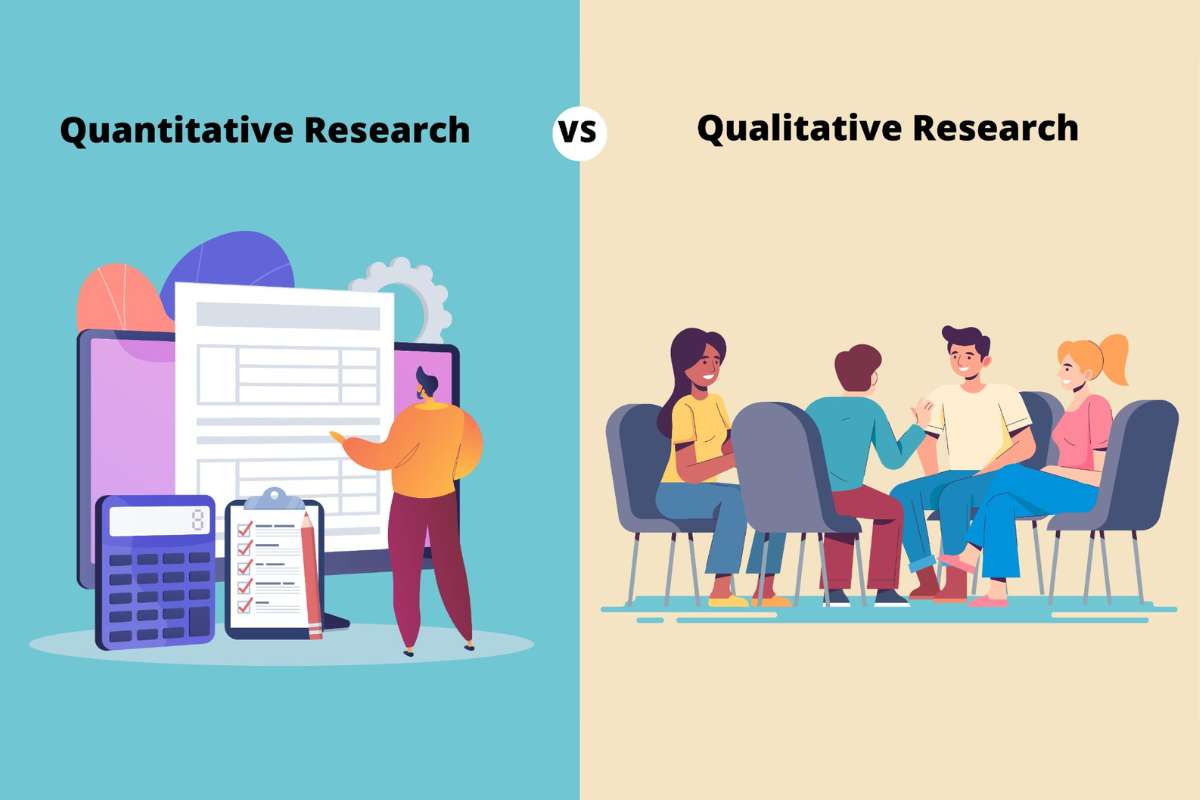Words or Numbers? Decoding Qualitative vs Quantitative Research
Words or Numbers? Decoding Qualitative vs Quantitative Research
Blog Article
Share Now:
LinkedIn
Twitter
Facebook
Reddit
Pinterest

- Source: blog.aureliuslab.com
Introduction
Have you ever wondered how researchers figure out why people choose one product over another, or how they come up with conclusions about a topic? Whether you’re studying human behavior, analyzing data, or working on a business project, the answer often comes down to one big decision: qualitative vs quantitative research. Both types of research are used for different reasons, and knowing which one to use can make a huge difference in your findings.
So, let’s take a look at the differences between qualitative and quantitative research, how they are used, and why choosing the right one matters.
What Is Qualitative Research?

Methods like interviews, focus groups, and case studies are common in qualitative research. These techniques allow researchers to gather detailed insights into people’s experiences, opinions, and behaviors. The goal is to uncover the deeper meanings behind people’s actions or attitudes, not just surface-level information.
Researchers have many ways to explore a topic or understand an issue using qualitative research.
Here are some common ways researchers gather qualitative research data:
- Observing people in their daily lives to understand their culture and behaviors (ethnographic studies).
- Hosting small group discussions where people share their thoughts and experiences on a topic (focus groups).
- Looking at written records, photos, videos, or audio recordings to learn from past events.
- Having one-on-one conversations with individuals to get personal insights.
- Collecting real-life stories and experiences from people about their memories or important events.
What Is Quantitative Research?

Let’s say you’re interested in finding out how many people prefer a certain brand of soda. You would use a survey to gather data from a large group, then use statistical methods to see how many people answered a certain way. The goal of quantitative research is to get measurable, concrete data that can be analyzed and applied more broadly.
Here are some common ways to gather quantitative research data:
- Running polls, surveys, or experiments to collect numerical data.
- Keeping track of records and organizing them into databases.
- Watching and measuring specific behaviors or reactions.
- Analyzing multiple past studies to find patterns and trends (also known as a meta-analysis).
- Asking people to fill out online or paper questionnaires.
Key Differences: Qualitative vs Quantitative Research
The main difference when discussing qualitative vs quantitative research lies in the kind of data each one focuses on and how the data is analyzed. Here’s a closer look:
Data Type: In qualitative research, the data is mostly descriptive. It could be interviews, observations, or other forms of narrative data. Quantitative research, on the other hand, is made up of numbers and statistics.
Purpose: Qualitative research aims to explore ideas and understand experiences or behaviors in depth. Quantitative research aims to measure and quantify things, often to identify trends or prove a hypothesis.
Analysis: When analyzing qualitative data, researchers look for themes, patterns, and meanings in the responses. In quantitative research, the analysis is more statistical and involves numbers, percentages, or correlations.
Sample Size: Qualitative research usually involves smaller sample sizes because the focus is on gaining deep insights from each participant. Quantitative research involves larger sample sizes, allowing researchers to generalize their findings to a larger population.
When to Use Qualitative vs Quantitative Research?
So, how do you decide– qualitative vs quantitative research? It really depends on what you’re trying to find out.
If you want to explore a topic in detail and understand the reasons behind people’s thoughts or behaviors, qualitative research is the way to go. For example, if you’re studying why people prefer one brand over another, conducting interviews with a small group can give you a clear picture of their reasons. You might find that people love the brand for its quality, customer service, or emotional connection.
On the other hand, if you want to measure something on a larger scale or understand trends across a population, quantitative research is better suited for that. For example, if you’re trying to figure out what percentage of people buy the brand each month, a survey with a larger sample would give you the data you need to see patterns.
The Best of Both Worlds: Combining Qualitative and Quantitative Research

In business, this can be especially useful. If a company wants to know why their customers prefer a certain product, they might start by asking a few loyal customers what they like about it. After gathering this information, they can use a larger survey to see if those feelings are shared by a wider audience. This helps them get both the insights and the numbers to support their decisions.
Challenges of Qualitative vs Quantitative Research
Both qualitative and quantitative research come with their own set of challenges. Qualitative research, while rich in detail, can be time-consuming and may include bias, as it’s often based on the researcher’s interpretation of responses. Plus, it may not always be easy to apply these findings to larger groups.
Quantitative research, while more objective, can overlook the why behind the numbers. Sometimes, big datasets don’t capture the personal stories or emotions that give context to the data. Gathering large amounts of data can be difficult and expensive.
Conclusion
When it comes to qualitative vs quantitative research, there’s no universal solution. Each method has its own strengths, and the choice between them depends on the research question you’re trying to answer. Qualitative research gives you deep insights into people’s thoughts and experiences, while quantitative research provides data that can be measured and analyzed across larger groups. By blending the detailed, personal insights from qualitative research with the broad, reliable data from quantitative research, you can get a clearer, more complete understanding of the topic you’re studying. Ultimately, the choice between qualitative and quantitative research is about knowing what you want to achieve and picking the right tool for the job.